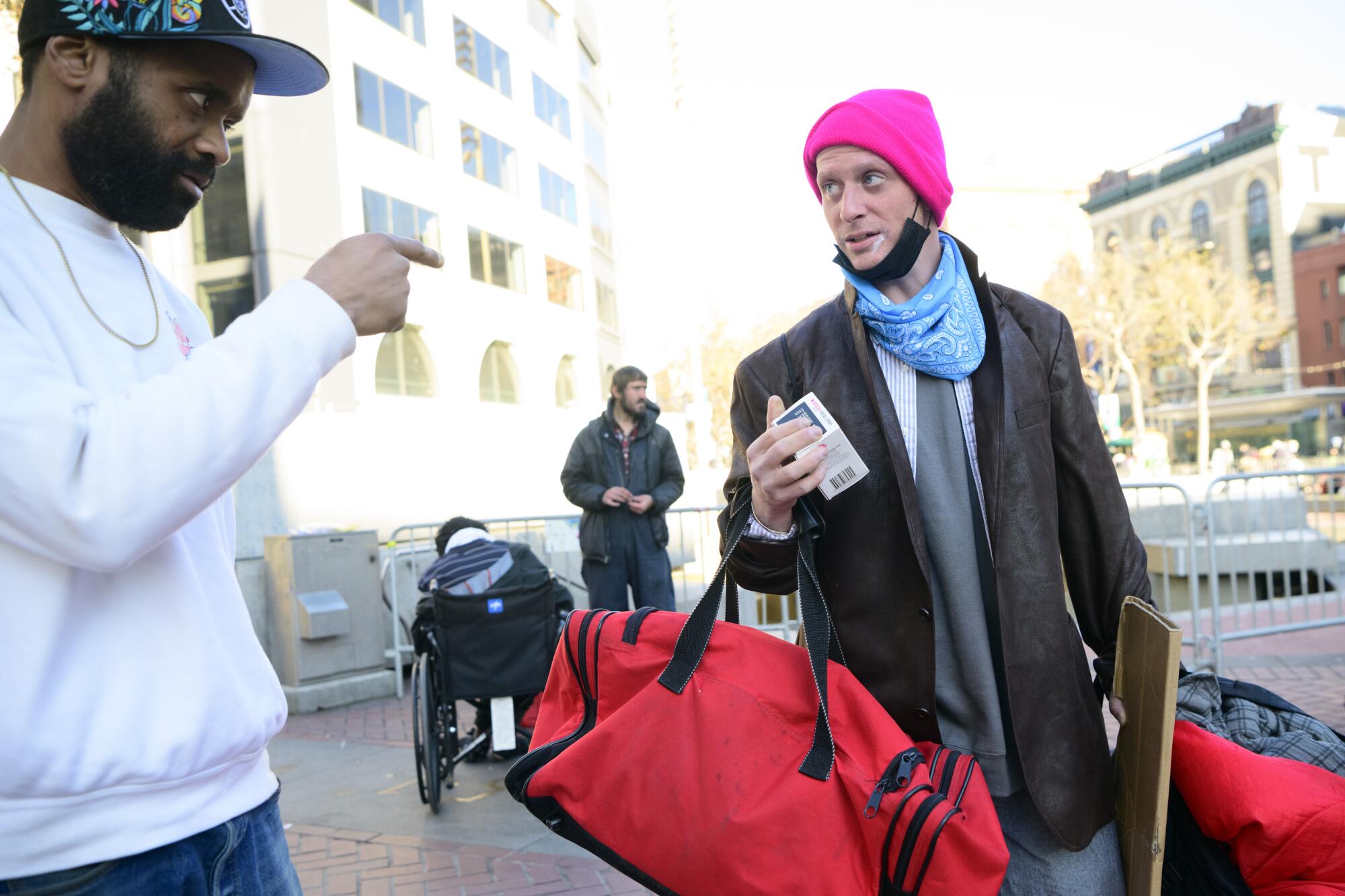
- Share via
SAN FRANCISCO — Monica Clayton was standing in line at a Burger King on Market Street in downtown San Francisco just before 7 a.m. when a frantic man ran into the restaurant.
“Somebody call 911, my girlfriend is overdosing,” he yelled.
Outside, the woman lay on the ground unresponsive. Her lips were turning blue. Paramedics arrived and administered a nasal spray, two or three times, Clayton recalled. After a minute, the woman regained consciousness.
Awed, Clayton — who is 36 and in recovery from meth addiction — approached a first responder and asked, “What is that stuff?”
It’s naloxone, also known as Narcan, a lifesaving medication that can reduce or reverse the effects of an opioid drug overdose, the medic told her that morning in 2012. In California, nonprofits and public health agencies distribute it as an easy-to-use nasal spray that anyone can carry to help someone in distress.
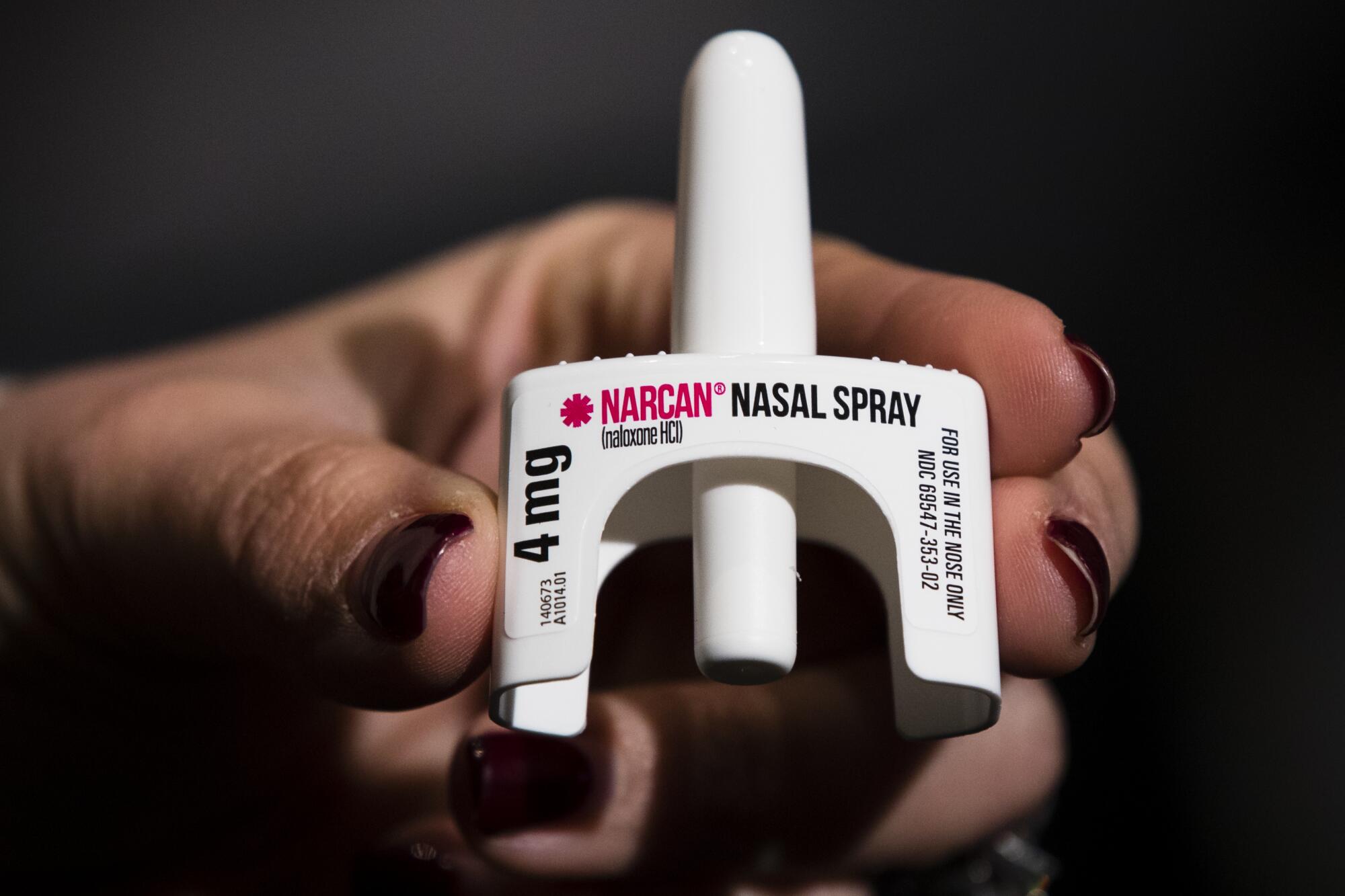
“I don’t want to watch somebody die,” Clayton said. “So I started carrying it after that, and I used it. I probably went through at least two bottles a month.”
Emergency personnel and public health staff throughout California are required to carry Narcan in their medical kits. But ordinary citizens? That’s a different story, but one that’s happening more often as the fentanyl crisis shows no sign of abating.
A question recently posted on the AskSF subreddit — “Is it normal for so many people to be carrying Narcan?” — sparked a frank conversation in which people shared why they carry the medication and urged others to begin doing the same.
The poster, identified as mistressofquirk, said they “stumbled upon a male who had recently OD’ed” on their way home from the grocery store.
“Tons of passersby offered Narcan and it was [bizarre] to see how ubiquitous it was, almost like a stick of gum,” the person wrote. “Is this a normal thing or an SF thing?”
Several users responded saying they had noticed it becoming more common. Reddit user RhapsodyinRude, a former emergency medical technician, keeps it in their truck because they “see enough nodding-off folks in my city to want to have it at hand.” User YorkofDukes said they began carrying Narcan after their sister died of an overdose from fake prescription drugs cut with fentanyl.
Like Clayton, more ordinary people in the city are starting to seek out the medication due to the high number of opioid overdoses happening around them. According to the San Francisco Department of Public Health, 625 people died from drug overdoses in 2021. That’s a 41% increase in deaths compared with pre-pandemic levels.
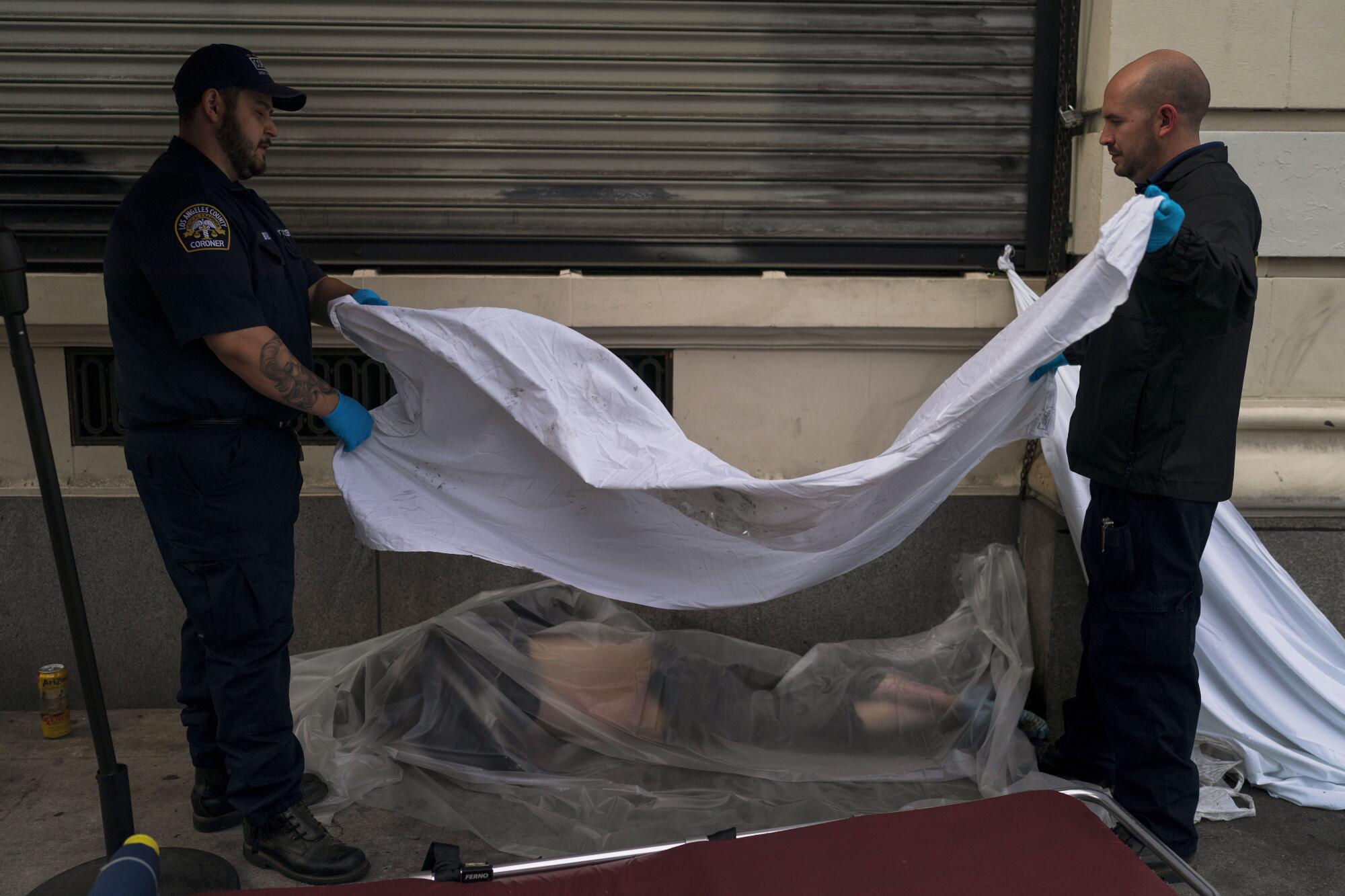
Nationwide, about 100,000 people die each year of a drug overdose, with about 80,000 of those deaths connected to opioids, according to data from the National Center for Health Statistics.
“Whether it’s the place you live in or if you have some perceived risk at the workplace or at school — you should carry this,” said Dr. Dan Ciccarone, a professor of family and community medicine at UC San Francisco.
Naloxone can be expensive, intimidating or difficult for the average person to obtain, but it is worth getting, he said, although packing the medication is still a “relatively rare thing.”
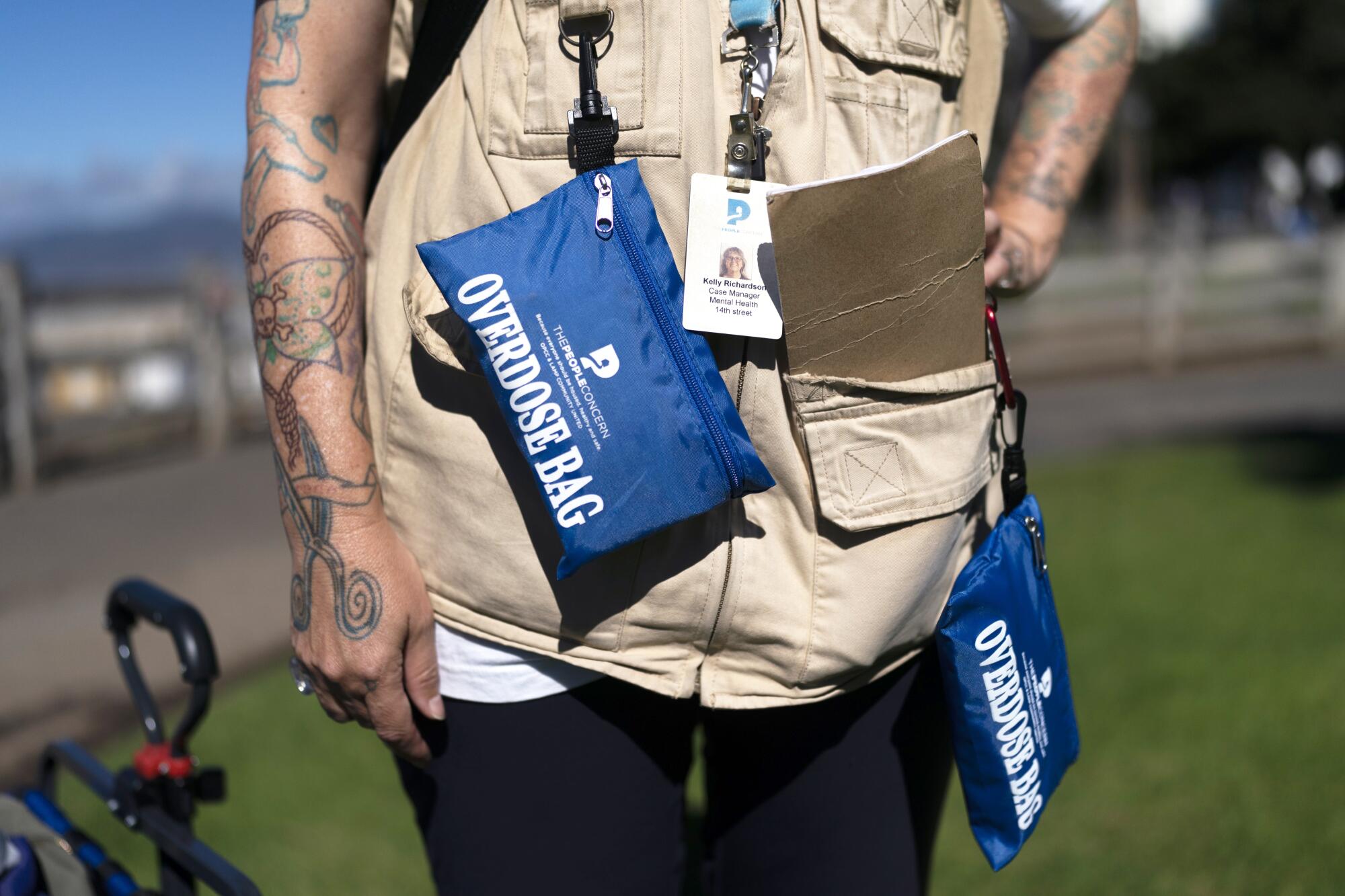
California has long been a leader in the fight against opioid overdose, passing laws that make naloxone easier for ordinary people to access. Most recently, state officials proposed legislation that would require K-12 schools to provide Narcan due to a rising number of overdoses among children.
Assemblymember Matt Haney (D-San Francisco) introduced a bill in late December that would require bars, gas stations, hotels and libraries in at-risk counties to have an emergency kit to treat opioid overdoses.
“Narcan is cheap & effective, it is common sense that it should be accessible everywhere needed,” Haney said in a tweet last month.
Last year, Narcan became available without a prescription in pharmacies such as Walgreens and CVS. Prices range from $30 to $200, depending on insurance. In addition, California residents can order free Narcan online through the nonprofit End Overdose, which has student-led outreach via universities throughout the state.
Ciccarone said Narcan has the potential to become the next EpiPen — a medication that people may keep handy at home or in their cars to help others.

In the Bay Area, where opioid overdoses reached historic highs during the COVID-19 pandemic, the reasons people carry Narcan are varied, some heartbreaking.
Carly Stevenson, 30, of San Francisco, saw her mother overdose on synthetic opioids more than once when she was a child. In 2009, her friend died of an overdose just three days before his 16th birthday.
“Watching all that happen when I was a kid really changed things,” she said.
Since then, Stevenson keeps Narcan on hand. Though her mom has been sober for years, Stevenson still carries the antidote when she goes downtown and has it stocked at home “just in case.”
“I feel like I’ve jumped over a barrier,” she said. “Suddenly I’m not so worried about my friends and family all the time. ... I keep it around as a reminder that it can happen anywhere.”
In communities of color and queer spaces, people have taken it upon themselves to provide resources and education related to harm reduction in opioid use.
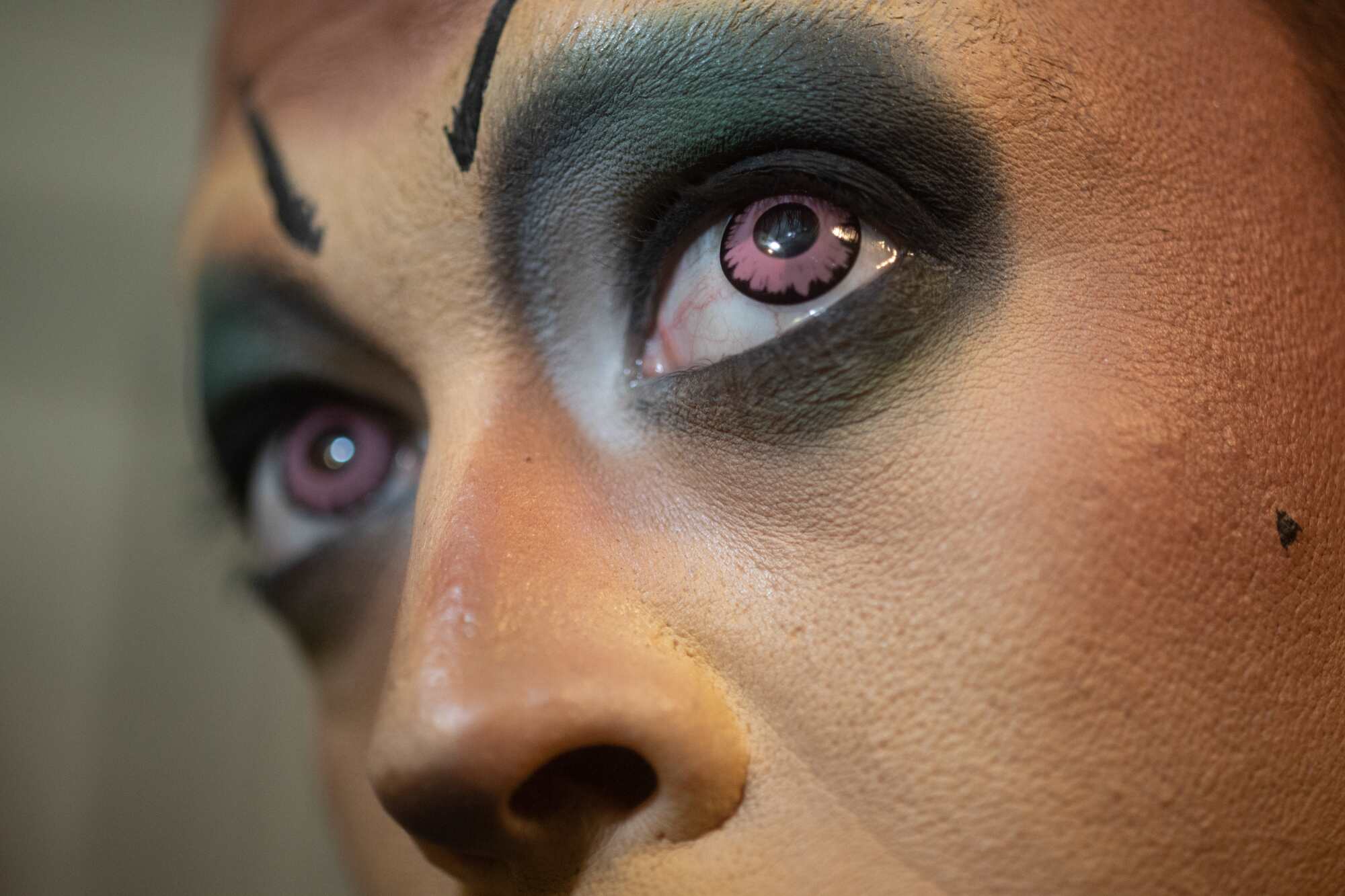
Cary Escovedo, 32, works in public health during the day, but he has dedicated his nightlife career to teaching people how to help someone experiencing an overdose.
Escovedo transforms every Saturday night into drag queen MC Kochina Rude at Oasis, a popular nightclub in the South of Market district. During every appearance, he makes sure to reserve at least five minutes for a crash course on Naloxone, which he then hands out for free.
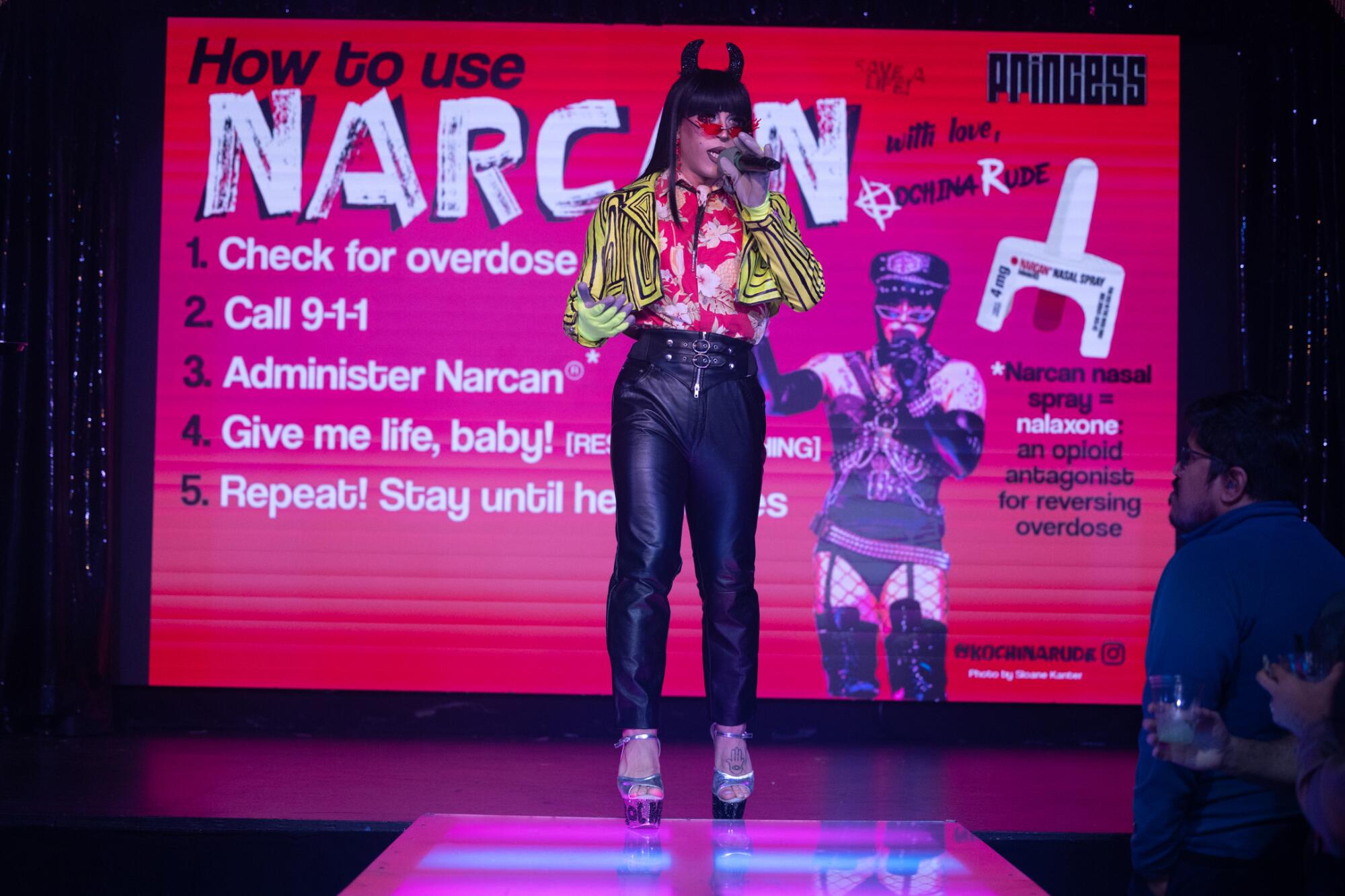
On a recent weekend, the curtain opened and out strode Kochina Rude, resplendent in leather pants, a yellow-and-black striped jacket, gloves from AutoZone and black sparkling devil horns.
“How many of you are Santa’s little helpers today?” Kochina Rude asked the audience just after midnight. “You heard me talk about this before, but guess what, b—? We are going to talk about harm reduction!”
The screen behind him changed to a bright red with the words “How to use Narcan” in crisp white. Two of Santa’s helpers dressed in red silk came onstage with serving trays full of Narcan.
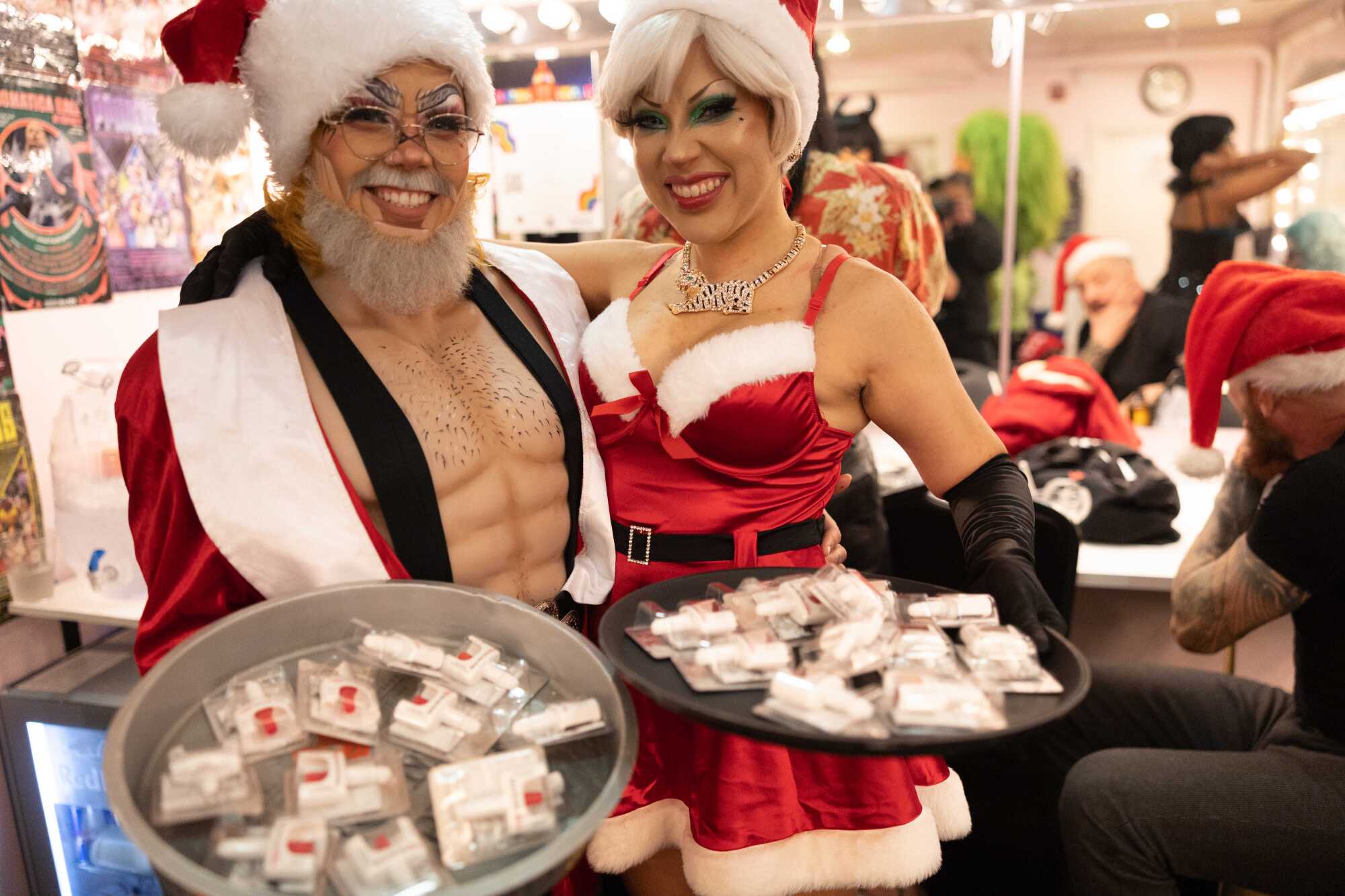
“I want people to be prepared and ready to use it,” Escovedo said in an interview. “Narcan is not just a symbolic thing that you carry around to feel good about yourself. Nightlife community members are around drug users, so that’s why I’m putting it in their hands.”
Escovedo is a certified overdose prevention trainer and outreach volunteer through the Drug Overdose Prevention and Education Project — a naloxone distribution program under the National Harm Reduction Coalition in partnership with the San Francisco Department of Public Health.
The San Francisco project has trained more than 13,000 people how to administer naloxone to reverse an overdose.
“The beauty of Narcan is that it’s a convenient little nasal spray,” Ciccarone said. “It’s small packaging that fits in your bag or purse. It is easy to carry around and could save a life.”
More to Read
Sign up for Essential California
The most important California stories and recommendations in your inbox every morning.
You may occasionally receive promotional content from the Los Angeles Times.











